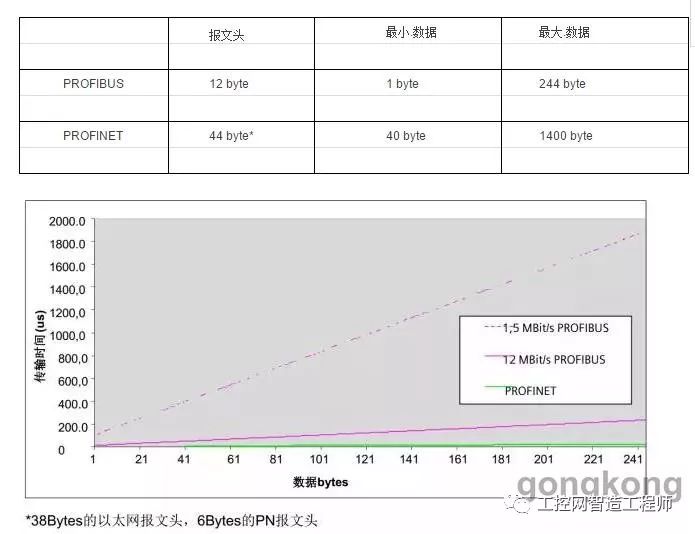PROFINET and PROFIBUS are two fieldbus systems introduced by the PNO organization. There is no comparability between the two; PROFINET is based on industrial Ethernet, while PROFIBUS is based on RS485 serial bus. The protocols of the two are completely different due to the differing media, with no connection between them. However, both have excellent real-time capabilities, as they both utilize a streamlined stack structure. Any development based on standard Ethernet can be directly applied to PROFINET networks. There are far more developers for Ethernet-based solutions in the world than for PROFIBUS, so there are more available resources for technological innovation.
Performance Comparison of PROFINET and PROFIBUS
For PROFIBUS, the maximum data transmission bandwidth is 12Mbps.
For PROFINET, the data transmission bandwidth is 100Mbps.
For PROFIBUS, the data transmission mode is half-duplex.
For PROFINET, the data transmission mode is full-duplex.
For PROFIBUS, the maximum consistency data is 32 bytes.
For PROFINET, the maximum consistency data is 254 bytes.
For PROFIBUS, the maximum user data is 244 bytes.
For PROFINET, the maximum user data is 1400 bytes.
For PROFIBUS, the maximum bus length at 12Mbps is 100m.
For PROFINET, the bus length between devices is 100m.
For PROFIBUS, the guiding axis must operate in the DP master station.
For PROFINET, the guiding axis can operate in any SIMOTION.
For PROFIBUS, configuration and diagnostics require a dedicated interface template, such as CP5512.
For PROFINET, a standard Ethernet network card can be used.
For PROFIBUS, if a PG connects, it may cause communication issues.
For PROFINET RT, a PG connection may cause minimal reaction, while for PROFINET IRT, the connection will not cause any issues.
For PROFIBUS, special tools are needed for network diagnostics.
For PROFINET, IT-related tools can be used.
For PROFIBUS, there is generally only one master station on the bus. A multi-master system will lead to excessively long DP cycle times.
For PROFINET, any number of controllers can operate on the network. Multiple controllers will not affect the IO response time.
For PROFIBUS, the main sources of faults on the bus come from mismatched bus terminal resistors or poor grounding.
For PROFINET, bus terminal resistors are not required.
For PROFIBUS, copper and fiber optics are used as communication media.
For PROFINET, wireless (WLAN) can be used as an additional medium.
For PROFIBUS, an interface can only act as a master or slave. For PROFINET, all data types can be used in parallel.
For PROFINET, an interface can act as both a controller and an IO device.
For PROFIBUS, the network location of a device cannot be determined.
For PROFINET, the network location of a device can be determined through topology information.

